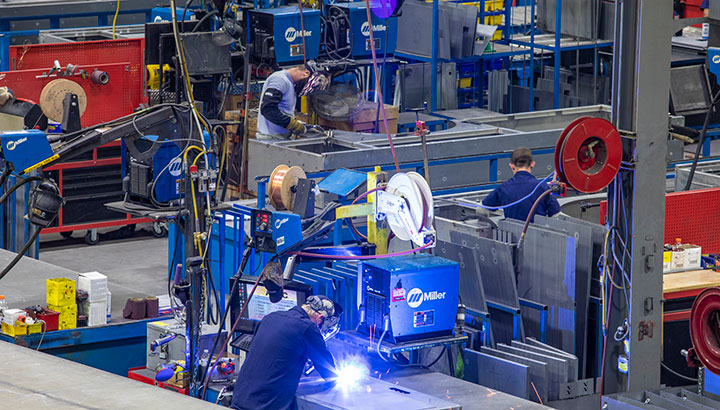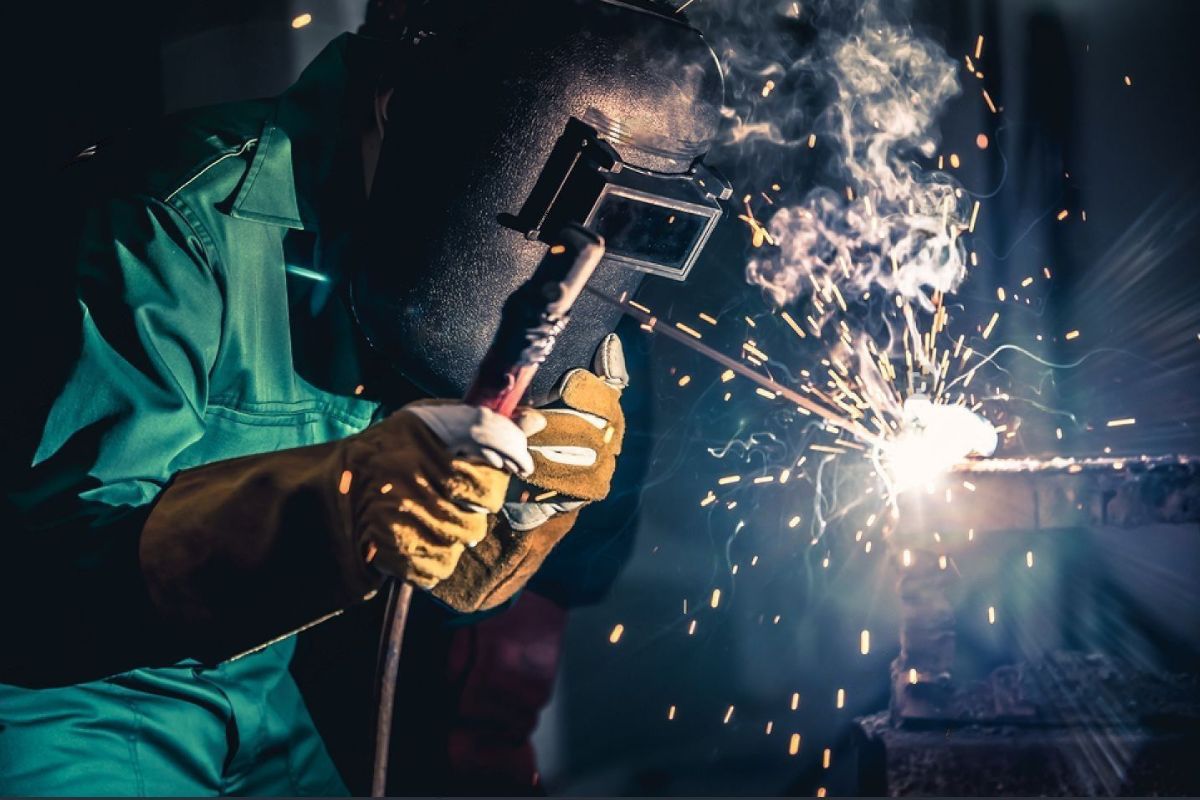Common Welding Repair Work Issues and How to Address Them Efficiently
Welding repair services typically come across an array of problems that can threaten the stability of the last product. Common issues include inadequate infiltration, porosity, and misalignment, to name a few. Each issue offers special challenges that call for specific techniques for resolution. Comprehending these problems is necessary for welders aiming to improve their abilities and end results. This conversation will check out these typical welding repair issues and reliable techniques to address them.
Inadequate Infiltration
Insufficient penetration happens when the weld metal falls short to totally fuse with the base material, leading to weak joints and possible structural failures. This issue frequently originates from insufficient warmth input, wrong electrode angle, or inappropriate welding speed. Welders may experience insufficient penetration as a result of a miscalculation of the needed parameters for a specific material density or type. In addition, contamination on the base material's surface area can prevent efficient bonding, intensifying the trouble. To deal with poor infiltration, welders must ensure ideal setups on their equipment and maintain a clean work surface area. Regular assessment of welds is recommended to determine any type of deficiencies early, permitting timely corrections and the prevention of endangered architectural integrity in welded assemblies.
Porosity
Porosity is a common defect in bonded joints that manifests as small gas bubbles entraped within the weld metal. This problem can jeopardize the integrity of the weld, causing minimized toughness and prospective failing under anxiety. Montana Mobile Welding and Repair Welding. Porosity typically occurs from contamination, wetness, or incorrect welding methods, which permit gases to get away right into the liquified weld swimming pool. To attend to porosity, welders must assure appropriate surface area preparation, preserve a clean workplace, and use suitable welding parameters. In addition, selecting the right filler material and protecting gas can minimize gas entrapment. Normal examination and screening of welds can aid recognize porosity early, guaranteeing timely rehabilitative activities are taken, thereby preserving the top quality and integrity of the bonded structure
Misalignment
Misalignment in welding can develop from numerous aspects, including improper setup and thermal development. Understanding the origin causes is necessary for reliable resolution. A number of modification techniques are available to realign elements and assure architectural honesty.
Root causes of Misalignment
Welding imbalance usually stems from a selection of underlying concerns that can jeopardize architectural honesty. One main reason is incorrect fit-up of parts prior to welding, which can result in gaps and irregular surface areas. Variants in thermal expansion throughout the welding process can also cause distortion, particularly if the materials being signed up with have various coefficients of growth. Additionally, insufficient clamping and fixturing might fail to hold components securely in area, bring about movement throughout welding. Improperly maintained equipment, consisting of welding makers and tools, might introduce incongruities in the weld bead, additional adding to imbalance. Finally, driver mistake, originating from not enough training or experience, can also play a considerable role in creating misaligned welds.
Correction Strategies Offered
Resolving misalignment effectively requires a mix of restorative techniques tailored to the certain concerns available. One usual approach is using jigs or fixtures to hold parts in the appropriate setting throughout welding, ensuring constant alignment. In addition, preheating the materials can help lower distortion and enhance fit-up. For significant misalignment, mechanical adjustment techniques, such as utilizing hydraulic jacks or clamps, can be used to fix the placement before welding. Post-weld warmth treatment may additionally be required to alleviate anxieties brought on by misalignment. Mindful inspection and modification throughout the setup phase can prevent misalignment issues from ending up being significant issues, promoting a smoother welding process and boosting general architectural integrity.
Distortion
Distortion is a common challenge in welding that can develop from numerous elements, including irregular cooling and heating. Comprehending the reasons for distortion is necessary for implementing efficient prevention methods. Resolving this concern not just boosts architectural integrity however additionally enhances the general quality of the weld.
Causes of Distortion
When based on the intense warmth of welding, products typically undertake modifications that can result in distortion. This phenomenon mostly emerges from thermal development and contraction throughout the welding procedure. As the weld location warms up, the product expands; upon air conditioning, it gets, which can develop inner tensions. Furthermore, irregular heating throughout a work surface can worsen these tensions, causing warping or flexing. The type of material also plays a significant role; metals with varying thermal conductivity and coefficients of growth may respond in different ways, resulting in uncertain distortions. Bad joint design and poor fixturing can contribute to misalignment throughout welding, raising the likelihood of distortion. Understanding these causes is crucial for efficient welding repair service and prevention techniques.
Avoidance Techniques
Efficient avoidance techniques for distortion during welding focus on regulating warm input and making certain correct joint style. Maintaining a consistent heat input aids to minimize thermal development and contraction, which can bring about distortion. Utilizing methods such as pre-heating the work surface can likewise decrease the temperature level slope, promoting uniform heating. Additionally, picking ideal joint designs, such as T-joints or lap joints, can enhance stability and reduce tension concentrations. Applying appropriate fixturing to safeguard the work surfaces in position further help in keeping placement during the welding procedure. Staggered welding series can disperse heat a lot more evenly, avoiding localized distortion. By using these techniques, welders can substantially decrease the possibility of distortion and improve the general quality of their welds.
Fracturing
Fracturing is an usual problem experienced in welding fixings, frequently resulting from different factors such as incorrect air conditioning prices, product selection, or inadequate joint prep work. The event of cracks can substantially compromise the honesty of the weld, leading to possible failures during operation. To resolve this issue, welders should initially analyze the root triggers, making certain that materials work and properly selected for the details application. Furthermore, controlling the air conditioning rate during the welding process is necessary; fast air conditioning can induce stress and anxiety and lead to fracturing. Appropriate joint style and preparation additionally contribute to lessening the risk. Executing these techniques can improve weld top quality and durability, eventually lowering the likelihood of splitting in completed weldments.

Insufficient Combination
A substantial problem in welding repairs is insufficient fusion, which occurs when the weld steel does not navigate to this site adequately bond with the read this post here base material or previous weld passes - Welding. This problem can bring about weaknesses in the joint, potentially endangering the integrity of the bonded structure. Elements adding to incomplete combination include not enough warm input, incorrect welding technique, and contamination of the surfaces being joined. To address this issue successfully, welders ought to guarantee correct pre-weld cleansing and surface area preparation, in addition to readjust their welding specifications to accomplish adequate infiltration and combination. Routine evaluation throughout the welding process can likewise assist determine insufficient combination early, allowing for prompt rehabilitative actions to enhance the general quality of the weld
Overheating
While welding repair work can improve architectural integrity, overheating provides a considerable difficulty that can bring about material deterioration. Too much heat during welding can modify the mechanical homes of metals, causing decreased stamina, raised brittleness, and warping. This phenomenon is particularly essential in high-stress applications where architectural reliability is extremely important. Recognizing getting too hot can involve aesthetic evaluations for staining or distortion, along with keeping an eye on temperature during the welding procedure. To reduce the threats related to overheating, welders must utilize proper methods, such as controlling warmth input, readjusting travel speed, and utilizing ideal filler products. In addition, executing pre- and post-weld warmth treatments can help recover material residential or commercial properties and boost the overall high quality of the repair, making certain long-term performance and security.
Often Asked Concerns
What Are the Common Signs of a Welding Flaw?

How Can I Test My Welds for High quality?
To examine welds for high quality, one can utilize visual assessments, ultrasonic testing, and radiographic approaches. Each strategy guarantees architectural integrity, determines issues, and verifies adherence to specified requirements, ultimately boosting the dependability of the welded joints.
What Security Precautions Should I Take While Welding?
When welding, one should focus on safety and security by using suitable personal safety tools, making sure correct ventilation, protecting combustible materials away, Discover More Here maintaining a clean work space, and knowing environments to avoid injuries and accidents.
Can I Repair a Weld Without Renovating the Entire Joint?
Fixing a weld without renovating the entire joint is possible, relying on the damages (Belgrade). Techniques such as grinding, adding filler product, or using a welding process can effectively deal with details imperfections while maintaining the surrounding structure
What Tools Are Essential for Efficient Welding Repairs?
Necessary tools for efficient welding repair work consist of a welding maker, cable brush, grinder, safety equipment, clamps, and filler products. Each tool plays a crucial duty in making sure quality and security throughout the repair service procedure. Porosity commonly emerges from contamination, dampness, or incorrect welding methods, which enable gases to get away right into the molten weld swimming pool. Poorly kept devices, consisting of welding equipments and devices, might present disparities in the weld bead, more contributing to imbalance. When subjected to the intense warmth of welding, products typically undergo modifications that can lead to distortion. Fracturing is a common problem run into in welding repair work, frequently resulting from numerous aspects such as inappropriate cooling prices, material option, or poor joint prep work. A substantial concern in welding repair services is insufficient fusion, which happens when the weld metal does not effectively bond with the base material or previous weld passes.